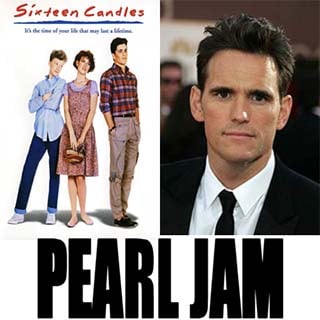February 4, 2016 | Marti Bowman
February 4, 2016 | Marti Bowman
 With a better sense of how to attract top millennial talent, senior care providers might believe the hardest part of developing an effective staff—recruitment and training—is behind them. However, retaining that millennial talent can be just as challenging, if not more so, than getting this generation through the door in the first place.
With a better sense of how to attract top millennial talent, senior care providers might believe the hardest part of developing an effective staff—recruitment and training—is behind them. However, retaining that millennial talent can be just as challenging, if not more so, than getting this generation through the door in the first place.
I myself am not a millennial. I’m a proud member of Generation X, having grown up with Sixteen Candles, Pearl Jam and the dreamy Matt Dillon. With all the discussion about millennials in the workplace, I have often thought back to what my career was like in its earlier days. Honestly, I have seen some similarities as well as some stark differences, one of which is job loyalty.
By the end of 2020, nearly two-thirds of millennials expect to leave their current jobs for a new organization or to do something different, while only 16% see themselves with their current employers a decade from now, according to findings from The Deloitte Millennial Survey 2016. The consulting firm’s fifth annual global survey consists of responses from nearly 7,700 millennials from 29 countries, all of whom were born after 1982, have a college or university degree, are employed full-time and mostly work in large, private-sector organizations.
“This remarkable absence of loyalty represents a serious challenge to any business employing a large number of millennials, especially in those markets—like the United States—where millennials now represent the largest segment of the workforce,” the report states.
The prevalence of “job hopping” among millennials might prove concerning, but certain approaches to the issue could reduce its impact—and an overall senior living industry turnover rate of 44.4%.
Turning over nearly half the workforce annually is not a sustainable model for staffing senior living communities in the coming years.
One concept to retain millennials is shifting their line of thinking from jumping between different companies to gaining opportunities for new positions within a single company. That way, millennials can enjoy varied job functions without joining another organization, and senior care providers can make the most of their staff at hand through workforce management best practices.
Of course, changing the definition of job hopping for millennials means maintaining a work environment that compels them to stay at a job rather than leave.
According to the Deloitte survey, 71% of millennials who indicated they’re likely to leave in the next two years aren’t happy with how their leadership skills are being developed. Meanwhile, employees surveyed who expressed loyalty to their companies were more likely to agree that support and training is available to those who want to take on leadership roles, and that younger employees are actively encouraged to work toward leadership roles.
Much like it is important to recruiting millennial talent, establishing career paths within the senior living industry is crucial to keeping millennials in the sector, as well. When hiring millennials for an entry-level position, providers must then go on to provide the necessary assistance and skill development to help them move up the ladder.
Finally, simply putting in the time and effort to understand the needs and wants of millennials in a workplace environment goes a long way toward keeping them content at a certain job. Senior living providers might find themselves surprised at just how traditional many millennials’ personal goals actually are, many of which are also important to me – a Gen X-er!
“They seek a good work/life balance, they want their own homes, they desire a partner for life and they strive for financial security that allows them to save enough money for a comfortable retirement,” the Deloitte report states. “The ambition to make positive contributions to their organizations’ success and/or to the world in general also rates highly.”
Subscribe to the OnShift Blog
Recent Posts
Categories
About Marti Bowman
As Chief Marketing Officer, Marti brings significant experience leading go-to-market strategies, product marketing, communications and PR programs for technology startups as well as Fortune 500 organizations. Prior to OnShift, Marti was a principal product director at Oracle, where she drove global go-to-market strategies for the Oracle Fusion Middleware product portfolio. She joined Oracle through the acquisition of BEA Systems, where she was a product marketing manager.
See for yourself why thousands of providers rely on OnShift’s innovative software for recruitment, hiring, workforce management, pay and engagement. Request your personalized demo today.
